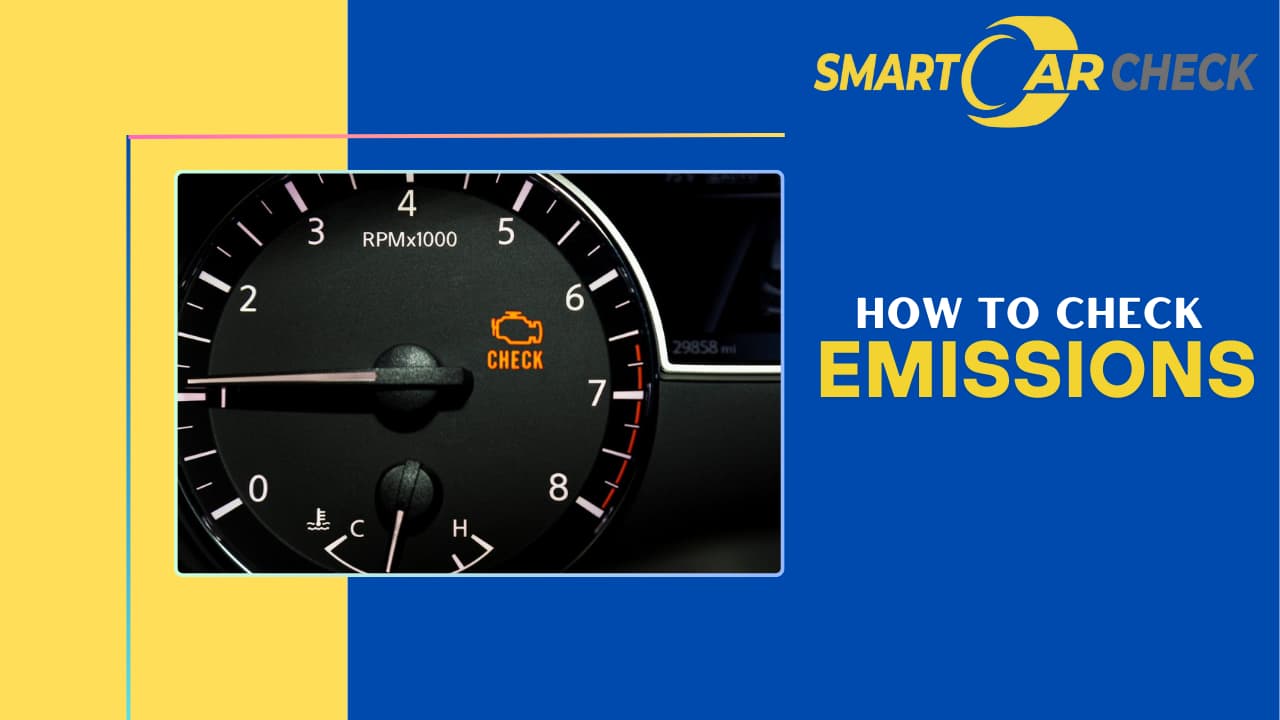Due to environmental concerns, car emissions have become a significant issue in recent years. Pollution levels have increased over time, damaging the environment and posing a risk to human health. Many drivers don’t even realise that their cars could contribute more to air pollution.
From now on, you need to pay more attention to emissions, as ignoring emissions can cost you both fines and fuel. It can also keep you from clean air zones like London’s ULEZ.
But there’s good news. You can easily check and manage your car’s carbon emissions. In this article, we’ll walk you through the steps, share useful tips, and show you how to stay compliant and eco-friendly.
What is CO2, and why does it matter?
Carbon dioxide, or CO2, is a gas released when fuel like petrol or diesel is burned to power a vehicle. CO2 traps the heat from the sun and is the main cause of global warming. Cars are a significant problem in the UK, and transport is one of the UK’s largest contributors to CO2 emissions.
How CO₂ Emissions Affect Vehicle Tax Bands in the UK
In the UK, the amount of Vehicle Excise Duty (VED), often called “road tax,” is strongly linked to a car’s CO₂ emissions. Vehicles that produce more carbon dioxide generally fall into higher tax bands and incur higher tax costs.
The government sets Vehicle Excise Duty (VED) based on a sliding scale of CO₂ emissions for cars registered between March 1, 2001, and March 31, 2017. Lower-emission cars (under 100g/km) can have very low or even free tax rates, while cars emitting over 255g/km can face significantly higher annual charges.
The rules changed slightly for cars registered after 1 April 2017. The first-year tax (paid when the car is first registered) still depends on CO₂ emissions, with lower-emission vehicles paying less. However, from the second year onwards, most petrol and diesel cars pay a flat standard rate, unless the vehicle had a list price over £40,000—then an additional charge applies for five years.
Electric vehicles with zero CO₂ emissions typically qualify for a £0 tax, making them highly attractive from a tax-saving perspective.
In short, the more CO₂ your car emits, the higher the tax you expect to pay, especially in the first year of ownership.
| PLG Tax Class 11 | 12 months | Six months |
| Not over 1549cc | £220 | £121 |
| Over 1549cc | £360 | £198 |
Tax bands for cars registered after March 2001 and before April 2017
For cars first registered after March 2001 and before April 2017, road tax (VED) is divided into 13 bands. These bands are based on how much CO2 the car gives off. The less CO2 your car produces, the less tax you pay.
After the 2025 rule change, cars that produce less than 100g/km of CO2 no longer get free road tax. If your car gives off up to 100g/km of CO2, you must pay £20 a year.
The tax rules for petrol and diesel cars were mostly the same during this time.
| VED band | CO2 emissions | Annual rate |
| A | Up to 100g/km | £20 |
| B | 101-110g/km | £20 |
| C | 111-120g/km | £35 |
| D | 121-130g/km | £165 |
| E | 131-140g/km | £195 |
| F | 141-150g/km | £215 |
| G | 151-165g/km | £265 |
| H | 166-175g/km | £315 |
| I | 176-185g/km | £345 |
| J | 186-200g/km | £395 |
| K | 201-225g/km | £430 |
| L | 226-255g/km | £735 |
| M | Over 255g/km | £760 |
Tax Bands for Cars Registered After April 2017
The UK’s taxation system for new cars changed on April 1, 2017. The changes only affect cars first registered after that date. The old tax system based on CO2 emissions was replaced by the new three-level taxation: zero, standard, and premium.
The reason for the change was that CO2 levels were decreasing, which meant that many drivers paid little or no tax, causing the government to lose a lot of money.
If your car is registered after April 1, 2017, you’ll need to pay for a first-year “showroom tax” and is based on how many CO2 emissions produced by the car. After the first year, most drivers pay a standard rate of £195 per year. However, if the car costs more than £40,000, owners also pay £425 extra each year for the next five years.
The rules changed again in 2025. Electric cars now have to pay road tax, too. New electric vehicles must pay the standard £195 rate, the £425 extra if the car costs over £40,000, and a first-year tax if their CO2 emissions are between 1 and 50g/km.
| CO2 emissions (g/km) | First-year rate | Standard rate |
| 0g/km | £10 | £195 |
| 1 – 50 | £110 | £195 |
| 51 – 75 | £130 | £195 |
| 76 – 90 | £270 | £195 |
| 91 – 100 | £350 | £195 |
| 101 – 110 | £390 | £195 |
| 111 – 130 | £440 | £195 |
| 131 – 150 | £540 | £195 |
| 151 – 170 | £1360 | £195 |
| 171 – 190 | £2190 | £195 |
| 191 – 225 | £3300 | £195 |
| 226 – 255 | £4680 | £195 |
| Over 255 | £5490 | £195 |
How Do Cars Produce CO2 Emissions?
When your car’s engine burns fuel, it mixes oxygen with petrol or diesel to create energy, but it also releases CO2 from the tailpipe. The more fuel your engine burns, the more it produces CO2, which is why larger, more powerful, and older cars with older engines typically have higher emission rates.
On the other hand, hybrids and electric vehicles produce little to no CO2, especially when the vehicle is charged from a clean energy source.
Checking the Car’s CO2 Emissions
Wondering how to check your car’s CO2? You’ve got several simple options. First, check your V5C logbook. It lists your vehicle’s CO2 output in grams per kilometre (g/km). You can also use tools like the CO2 emissions checker.
You can instantly get your car’s emissions rating by entering your registration number. Another way is during your MOT. The garage measures emissions and flags any excess levels. If your car fails, it won’t get a certificate until it is fixed.
What is a Good CO2 Reading for a Car?
We use the formula g/km to measure CO2 emissions. The lower the number, the more efficient and cleaner the car.
- Small petrol cars: 100–130 g/km
- Hybrids: often below 90 g/km
- Electric cars: 0 g/km
- SUVs or older diesel cars: 150–200+ g/km
A car’s emission level should be under 90g/km to be considered low-emission and eco-friendly. Anything above 160g/km is facing higher taxes and ULEZ fines.
How can I reduce my car’s emissions?
Reducing car emissions is possible. Here’s how you can reduce your car emissions all by yourself:
Pay Attention to How You Drive the Car
We suggest that you drive mindfully every time you drive the car. Remember to accelerate swiftly and avoid idling. Keep to a steady speed and do not overload the car.
Maintenance is Key
Remember to have your car maintained on time. Follow the maintenance date and check your tyres and engine regularly. A well-serviced engine will burn fuel efficiently and cleanly. Clean or replace the air filters regularly.
CO2 Emissions and Car Tax
Car tax in the UK depends on CO2 levels. Cars with higher emissions tend to have higher tax rates than cars with lower emissions. Be sure to check your car’s tax band to know what tax bracket it falls into.
CO2 Regulations and Fines for Car Manufacturers
The UK and EU have strict CO2 targets for carmakers. These set limits on the average emissions of all vehicles they sell. If a manufacturer’s fleet average goes over the limit, they will face a higher limit, which leads to brands creating low-emission cars.
These rules have made electric and hybrid cars more common and affordable in the UK. Every carmaker can be fined €95 for each gram of CO2 that goes over the set target, based on the average emissions from all the new cars they register.
Conclusion
Understanding your car’s emissions isn’t just about passing tests. It’s about saving money, staying legal, and helping the planet. If you’re unsure where your car stands, use a CO2 emissions check on Smart Car Check. It’s quick, easy, and gives you the facts.
Driving greener doesn’t have to mean buying a new EV. Small steps, such as regular checks, good driving habits, and utilizing helpful tools, make a significant impact.
Frequently Asked Questions
Do electric vehicles produce CO2?
EVs don’t release CO2 from the tailpipe. However, depending on the energy source, electricity production can cause emissions. Still, EVs are cleaner overall than petrol or diesel cars.
What is a ‘mild hybrid’?
A mild hybrid uses a small electric motor to support the engine. It doesn’t run on electricity alone but improves fuel efficiency.
Which gases do cars emit?
Cars release CO2, nitrogen oxides (NOx), carbon monoxide, and particulate matter. CO2 contributes to climate change, while others harm human health.
What is the CO2 limit for ULEZ?
Cars must meet Euro 6 (diesel) or Euro 4 (petrol) to avoid charges. CO2 isn’t the only factor, but it plays a role. Use this ULEZ compliance checker to find out if your car meets the standards.
Why might a car fail its MOT for emissions?
High emissions often mean engine problems, a dirty air filter, or a faulty exhaust. The MOT checks for excess CO2, NOx, and smoke. To be sure, you can get an MOT check to verify why your vehicle failed its MOT for emissions.
What happens if a car fails its MOT on emissions?
You won’t get a pass certificate. You’ll need to fix the issue and retest. Some repairs are simple, like a filter change. Others need engine work.
How much do emissions repairs cost in the UK?
It depends on the issue. A new catalytic converter might cost £150–£300. Filters and sensors are cheaper. Regular maintenance helps you avoid big bills.


